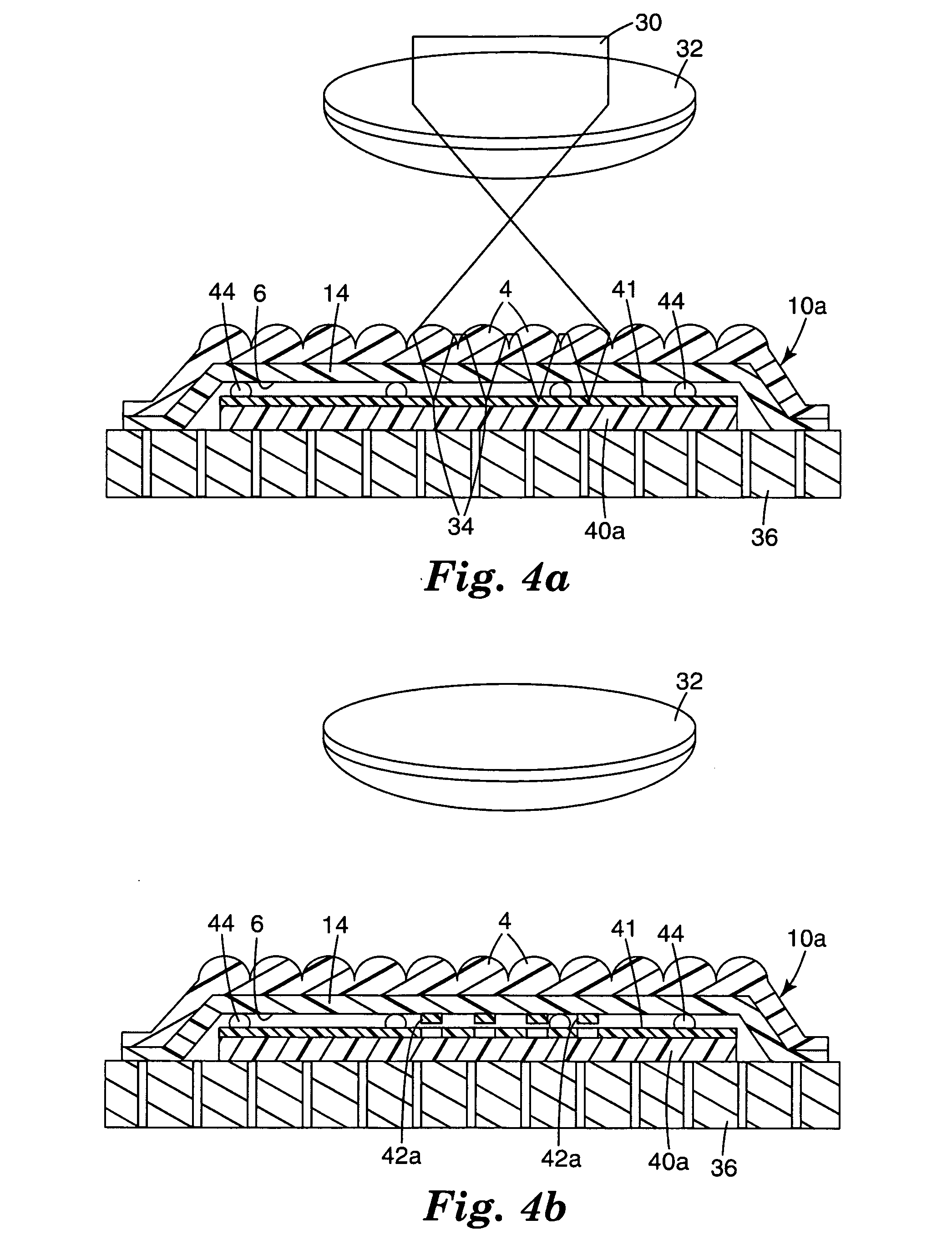Methods of forming sheeting with a composite image that floats and sheeting with a composite image that floats
a technology of composite images and forming methods, applied in the field of forming images on sheeting, can solve the problems of ill-adapted methods for producing three-dimensional images of virtual objects, image must be illuminated,
- Summary
- Abstract
- Description
- Claims
- Application Information
AI Technical Summary
Benefits of technology
Problems solved by technology
Method used
Image
Examples
example 1
[0099] This example describes a microlensed sheeting with a two-dimensional composite image that appeared to float below the sheeting and a second composite image that was three-dimensional that appeared to float above the sheeting. An optical train of the type depicted in FIG. 16 was used to form the floating images. Imaging, except for the variations described in the optical train below and the mass transfer method described above, was done in accord with the imaging methods taught in U.S. Pat. No. 6,288,842.
[0100] The optical train consisted of a Spectra Physics (Mountain View, Calif.) Hurricane™ Ti-Sapphire Ultrafast Laser operating at its fundamental wavelength of 800 nanometers and at an output power of 45 milliwatts measured at a position of 6.35 millimeters above the microlensed sheeting. The pulse width was approximately 120 femtoseconds and the pulse repetition rate was 250 Hz. A diffuser was not employed in the optical train of this example. A vacuum chuck with a rectang...
example 2
[0104] This example describes a microlensed sheeting with a single color two-dimensional composite image that appeared to float below the sheeting and a second two-dimensional composite image comprised of two colors that appeared to float above the sheeting. An optical train of the type depicted in FIG. 16 was used to form the floating images. Imaging, except for the variations in the optical train described in EXAMPLE 1 and the mass transfer method described above, was done in accord with the imaging methods taught in U.S. Pat.
[0105] No. 6,288,842.
[0106] Donor substrate sections of both cyan and carbon black and microlensed sheeting segments were prepared as set forth in EXAMPLE 1. The donor substrate sections and the microlensed sheeting were arranged on the vacuum chuck as described in EXAMPLE 1.
[0107] An image that would produce an oval two-dimensional composite image upon viewing was then imaged onto the material layer of the microlensed sheeting as set forth in EXAMPLE 1. T...
PUM
 Login to View More
Login to View More Abstract
Description
Claims
Application Information
 Login to View More
Login to View More - R&D
- Intellectual Property
- Life Sciences
- Materials
- Tech Scout
- Unparalleled Data Quality
- Higher Quality Content
- 60% Fewer Hallucinations
Browse by: Latest US Patents, China's latest patents, Technical Efficacy Thesaurus, Application Domain, Technology Topic, Popular Technical Reports.
© 2025 PatSnap. All rights reserved.Legal|Privacy policy|Modern Slavery Act Transparency Statement|Sitemap|About US| Contact US: help@patsnap.com



